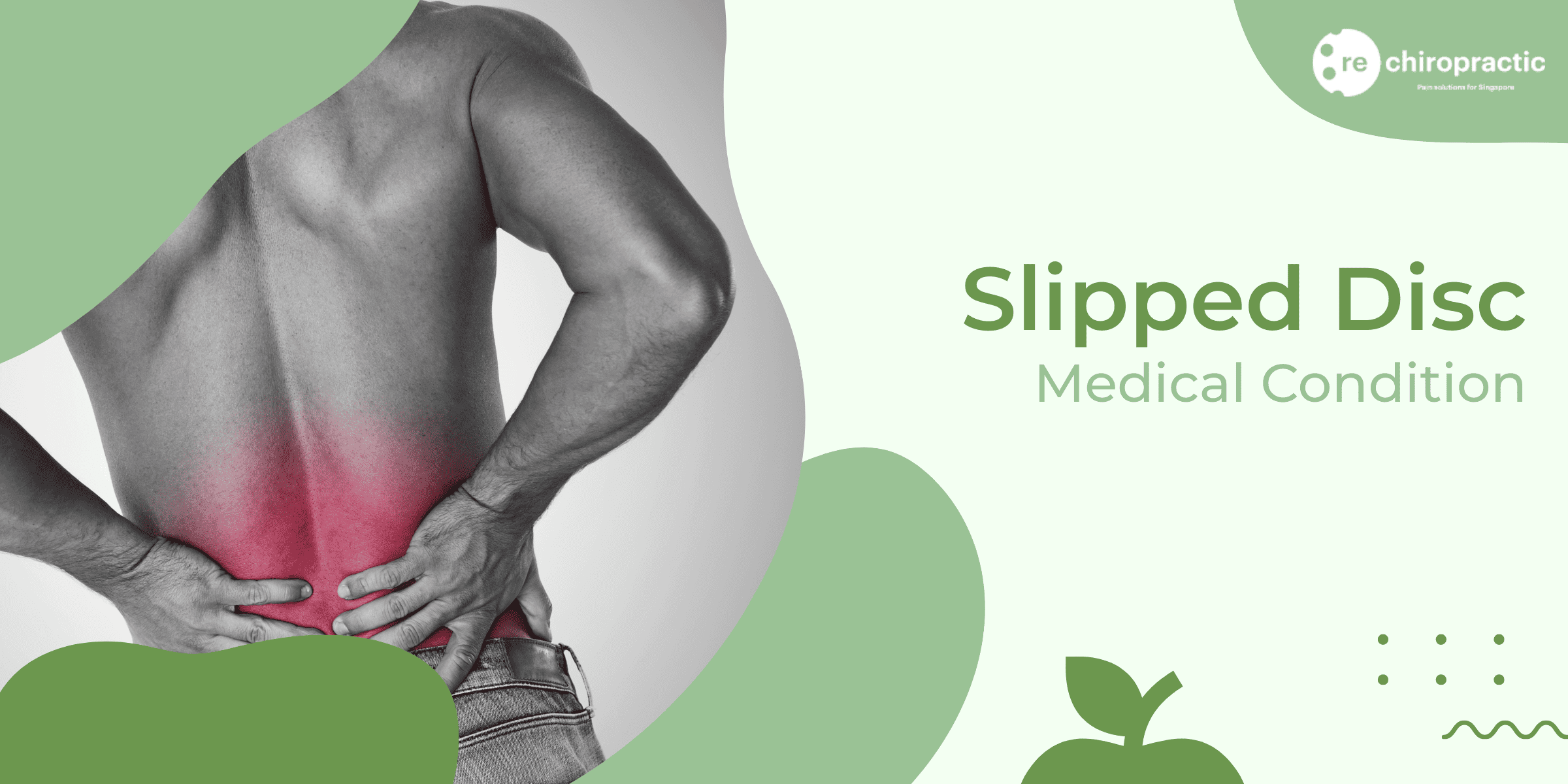
What is Slipped Disc?
A slipped disc, also known as a herniated disc or a ruptured disc, is a common spinal condition that affects millions of people worldwide. It occurs when one of the discs in the spine, which act as cushions between the vertebrae, becomes damaged and bulges or ruptures. This can lead to pain, discomfort, and other symptoms that can significantly impact a person’s quality of life.
When a disc slips out of place, it can put pressure on nearby nerves, causing pain and inflammation. The severity of the symptoms can vary depending on the location and extent of the disc herniation. In some cases, a slipped disc may cause no symptoms at all, while in others, it can result in severe pain and limited mobility.
Slipped discs most commonly occur in the lower back (lumbar spine) or the neck (cervical spine). However, they can also occur in the mid-back (thoracic spine), although this is less common. The condition can affect people of all ages, but it is more prevalent in individuals between the ages of 30 and 50.
Understanding the symptoms, causes, and risk factors associated with slipped discs is crucial for individuals seeking relief and effective treatment options. Chiropractic care has emerged as a popular and effective approach for managing slipped discs, providing patients with non-invasive, drug-free alternatives to traditional medical interventions.
Symptoms & Different Stages of Slipped Disc
Slipped disc can cause significant pain and discomfort. Understanding the symptoms and different stages of this condition is crucial for proper diagnosis and treatment. Here are some key signs to look out for:
- Localized pain: One of the primary symptoms of a slipped disc is localized pain in the affected area. This pain can range from mild to severe and may worsen with certain movements or activities.
- Radiating pain: In some cases, the pain may radiate to other parts of the body, such as the legs or arms. This is known as radiculopathy and occurs when the slipped disc compresses a nerve root.
- Numbness and tingling: Along with pain, individuals with a slipped disc may experience numbness or tingling sensations in the affected area or the areas connected to the compressed nerve.
- Muscle weakness: As the slipped disc puts pressure on the nerves, it can lead to muscle weakness in the affected region. This weakness may make it difficult to perform certain movements or tasks.
- Loss of bladder or bowel control: In severe cases, a slipped disc can cause a loss of bladder or bowel control. This is a serious symptom that requires immediate medical attention.
It’s important to note that the symptoms of a slipped disc can vary depending on the location and severity of the herniation. In the early stages, individuals may experience mild pain and discomfort that gradually worsens over time. It’s crucial to pay attention to these symptoms and seek medical attention if they persist or worsen.
If you experience any of the following symptoms, it’s important to consult a healthcare professional:
- Severe or worsening pain
- Difficulty walking or standing
- Numbness or weakness in both legs
- Loss of bladder or bowel control
These symptoms may indicate a more severe herniation or nerve compression, requiring immediate medical intervention. Remember, early diagnosis and treatment can significantly improve outcomes and prevent further complications.
Most Common Causes of Slipped Disc
Slipped disc occurs when the soft inner core of a spinal disc protrudes through the tough outer layer, putting pressure on nearby nerves and causing pain. There are several factors that can contribute to the development of a slipped disc, including:
- Age: As we age, the discs in our spine lose their elasticity and become more prone to injury. This makes older adults more susceptible to developing a slipped disc.
- Repetitive Movements: Engaging in repetitive movements, such as lifting heavy objects or twisting the spine, can increase the risk of a slipped disc. These activities put excessive strain on the discs, leading to their degeneration over time.
- Improper Lifting Techniques: Lifting heavy objects with improper technique, such as bending at the waist instead of using the legs, can place excessive stress on the discs and increase the risk of a slipped disc.
- Obesity: Excess weight puts additional pressure on the spine, increasing the likelihood of disc herniation. Obesity also contributes to the degeneration of spinal discs, making them more susceptible to injury.
- Sedentary Lifestyle: Leading a sedentary lifestyle with minimal physical activity weakens the muscles that support the spine. This lack of muscle strength can lead to poor posture and increased pressure on the discs, increasing the risk of a slipped disc.
While these are the most common causes of a slipped disc, it’s important to note that each individual’s experience may vary. It’s always best to consult with a chiropractic health expert to determine the specific causes and develop an appropriate treatment plan.
How Bad Can a Slipped Disc Get?
A slipped disc can cause varying degrees of pain and discomfort depending on the severity and progression of the condition. If left untreated or allowed to progress, a slipped disc can significantly impact a person’s quality of life. Here are some potential consequences:
- Increased pain: As the condition worsens, the pain associated with a slipped disc can become more intense and persistent. It may radiate to other areas of the body, such as the legs or arms, causing numbness, tingling, or weakness.
- Loss of mobility: The pressure from a slipped disc can impinge on nerves, leading to muscle weakness and difficulty moving. This can hinder daily activities, affect posture, and limit range of motion.
- Chronic discomfort: If a slipped disc is left untreated, it can result in chronic pain that persists for months or even years. This can greatly impact a person’s ability to work, exercise, and enjoy everyday activities.
- Impaired nerve function: As the disc continues to bulge or rupture, it can compress nearby nerves, causing further complications. This can result in nerve damage, leading to sensory changes, muscle weakness, and even loss of bladder or bowel control in severe cases.
- Spinal instability: Over time, a slipped disc can lead to spinal instability, as the affected area becomes more susceptible to further injury or damage. This can increase the risk of additional herniations or other spinal conditions.
It is important to recognize the potential consequences of allowing a slipped disc to progress and seek appropriate treatment. Chiropractic care can play a crucial role in managing and alleviating the symptoms associated with a slipped disc, promoting healing, and preventing further complications.
Chiropractic for Slipped Disc
Chiropractic care has been proven to be an effective treatment option for individuals suffering from a slipped disc. By focusing on the alignment and mobility of the spine, chiropractors can help alleviate pain and promote healing. Here are some ways chiropractic can help with this condition:
- Spinal adjustments: Chiropractors use manual manipulation techniques to realign the spine and reduce pressure on the affected disc. By restoring proper alignment, this can help relieve pain and improve overall function.
- Decompression therapy: Chiropractors may also utilize decompression therapy, which involves gently stretching the spine to alleviate pressure on the affected disc. This can help reduce pain and promote healing.
- Soft tissue therapy: In addition to spinal adjustments, chiropractors may incorporate soft tissue therapy techniques such as massage or stretching exercises. This can help improve flexibility, reduce muscle tension, and support the healing process.
- Lifestyle and ergonomic advice: Chiropractors can provide guidance on proper posture, body mechanics, and ergonomics to help prevent further injury and promote long-term spine health.
- Exercise and rehabilitation: Chiropractors may recommend specific exercises and rehabilitation programs to strengthen the surrounding muscles and improve stability. This can help prevent future disc issues and promote overall spinal health.
It is important to note that chiropractic care for a slipped disc should be tailored to each individual’s specific condition and needs. Consulting with a qualified chiropractor is crucial to determine the most appropriate treatment plan.
Self Help & Relief for Slipped Disc
- Rest: One of the most important self-help methods for managing a slipped disc is to give your body ample rest. Avoid any activities that worsen your symptoms and take breaks throughout the day to lie down and relax.
- Ice and Heat Therapy: Applying ice packs or cold compresses to the affected area can help reduce inflammation and numb the pain. Heat therapy, such as using a heating pad or taking warm showers, can help relax the muscles and alleviate discomfort.
- Exercise and Stretching: Engaging in gentle exercises and stretching can help improve flexibility, strengthen the surrounding muscles, and provide relief from pain. However, it is crucial to consult with a chiropractor or healthcare professional before starting any exercise routine to ensure you are performing the right movements and avoiding further injury.
- Good Posture: Maintaining proper posture throughout the day can help alleviate pressure on your spine and reduce the risk of worsening your slipped disc. Avoid slouching or sitting for prolonged periods, and consider using ergonomic chairs or supportive cushions to promote better posture.
- Weight Management: Excess weight can put additional strain on your spine, exacerbating the symptoms of a slipped disc. Maintaining a healthy weight through a balanced diet and regular exercise can help reduce the burden on your spine and improve your overall well-being.
- Stress Reduction: Chronic stress can contribute to muscle tension and exacerbate pain. Engaging in stress-reducing activities such as meditation, deep breathing exercises, or pursuing hobbies can help relax your mind and body, promoting healing and pain relief.
Remember, these self-help methods are intended to complement professional chiropractic care and should not replace it. It is essential to consult with a chiropractor or healthcare professional before attempting any self-relief methods to ensure they are suitable for your specific condition. They can provide personalized guidance and recommend additional strategies to manage your slipped disc effectively.
When to Seek Medical Attention for a Slipped Disc
Living with chronic pain caused by a slipped disc can be debilitating and significantly impact your quality of life. While there are self-relief methods that can provide temporary relief, it is important to recognize that enduring and living with pain is not a sustainable solution. Seeking professional medical attention is crucial for effective treatment and long-term management of a slipped disc.
If you experience any of the following symptoms, it is time to consult a healthcare professional:
1. Intense and Persistent Pain:
If you are experiencing severe and persistent pain in your back, neck, or limbs, it may be a sign of a slipped disc. This pain can worsen with movement or certain positions, making it difficult to perform daily activities.
2. Numbness or Tingling Sensation:
A slipped disc can compress nerves, leading to sensations of numbness, tingling, or a “pins and needles” feeling. These sensations may radiate down your arms or legs, depending on the location of the slipped disc.
3. Muscle Weakness:
Muscle weakness or difficulty in controlling certain muscles can occur when the nerves responsible for muscle function are affected by a slipped disc. This can lead to challenges in walking, lifting objects, or performing fine motor tasks.
4. Loss of Bladder or Bowel Control:
In rare cases, a severe slipped disc can compress the nerves that control bladder and bowel function. If you experience a sudden loss of control over these bodily functions, it is crucial to seek immediate medical attention.
Remember, living with a slipped disc should not be considered normal or something you have to endure. Seeking medical professionals, such as chiropractors, who specialize in spinal health and can provide targeted treatments, is essential for effective pain management and recovery. Don’t hesitate to reach out for help and take the necessary steps towards a pain-free life.

Dr. Jenny Li is America trained chiropractor who specialises in sports injury, sports performance, and spinal health. She graduated from Palmer College of Chiropractic in United States, upon completion of the her post graduate program she practiced in Hong Kong and currently is practicing in Singapore.

